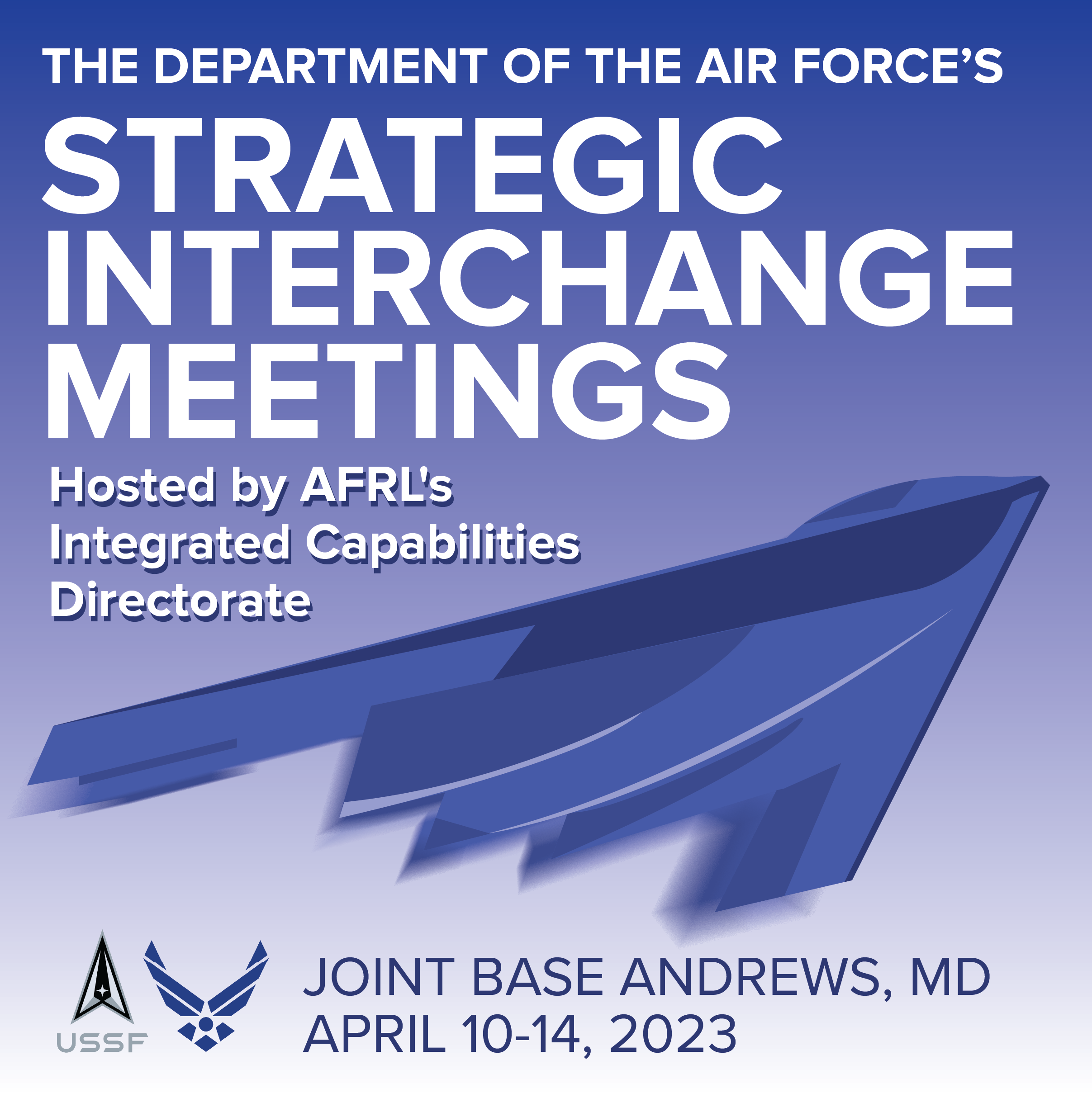JOINT BASE ANDREWS, Md. (AFRL) – The Department of the Air Force shared its priorities, plans and challenges with about 180 representatives from industry at the 2023 Strategic Interchange Meetings, or SIM, April 10-14, 2023.
The Air Force Research Laboratory’s, or AFRL, Integrated Capabilities Directorate hosted the event, which included presentations to help attendees plan future investments and learn about improved approaches for government-industry collaboration.
This year’s event featured strategic insights from the Department of the Air Force’s top leaders including Secretary of the Air Force Frank Kendall and the Air Force Chief of Staff Gen. CQ Brown, Jr., who provided industry with their perspectives and priorities on the current global environment, and how the department is implementing the National Security and National Defense strategies.
“SIMs offer the unique opportunity for the department to share its strategic direction with industry by offering a glimpse into the threats, priorities, challenges and strategies driving how and what we are developing and investing in,” said Chris Ristich, director, Integrated Capabilities Directorate. “They provide a perspective that improves the quality of our technology solutions and that our industry partners otherwise may not have access to.”
Ristich was emcee of the event and presented a talk on “Delivering Integrated Capabilities.”
The nearly 20 other presentations included briefings on six of the seven Air Force’s Operational Imperatives — the critical operational capabilities and functions the department says it must invest in to deter conflict and project power against future challenges.
The seven Operational Imperatives are Space Order of Battle, Operationally Focused Advanced Battle Management Systems, Moving Target Engagement, Tactical Air Dominance, Resilient Basing, Global Strike and Readiness to Deploy and Fight. There was no briefing on Global Strike.
“This event was geared toward level-setting our industry partners on the Operational Imperatives and the Integrated Capabilities Directorate portfolio,” said David Mann, SIM lead organizer.
Sec. Kendall appeared with Dr. Timothy Grayson (SAF/OS) as part of a Classified-level Executive Operational Imperative Strategy and Outbrief, to emphasize the urgency of investments for certain capabilities.
The format also made time available for more than 80 industry representatives to meet individually with Air Force subject matter experts to discuss their ideas and challenges.
Ristich said the interactions gave companies a chance to better understand specific opportunities, while also helping DAF experts better understand the current technological landscape and how to better leverage what already exists.
“In years past, these interactions have helped refine numerous department strategies for things like air superiority, multi-domain command and control and electronic warfare,” Ristich said.
The AFRL Integrated Capabilities Directorate was established in 2021 to lead cross-discipline collaboration and be the DAF’s leading source of operationally relevant future force solutions. It has four component offices: Architecture, Design, and Integration; the Center for Rapid Innovation; Strategic Planning Development and Experimentation; and the Transformational Capabilities Office.
Mann said the SIMs’ mission is to cultivate partnerships and promote collaboration.
“Our partnerships with industry and partner offices across the Department of the Air Force are vital to the Air Force and Space Force missions,” Mann said. “The Integrated Capabilities Directorate fully embraces that sentiment and will continue to do our best to ensure our partners are informed. “
Since the first SIM in 2017, the meetings have been held each year except 2020. The 2021 and 2022 forums were hybrid in-person/virtual events.
Mann said the 2023 meeting was in-person because of the need to present information with higher security classification levels.
“Years past events received feedback that our audience wanted to get briefs at a high level for better understanding and level-set,” Mann said. “We heard that, and ensured we accommodated.”
Ristich said attendees he met appreciated the access to higher leadership and more detailed information.
“We’ve received more positive feedback this year than any prior SIMs, both from the industry attendees and the government SMEs who attended,” Ristich said.

2023 Strategic Interchange Meetings (U.S. Air Force graphic / Patrick Foose)
About AFRL
The Air Force Research Laboratory or AFRL, is the Department of the Air Force’s primary scientific research and development center. AFRL plays an integral role in leading the discovery, development and integration of affordable warfighting technologies for our air, space and cyberspace force. With a workforce of more than 11,500 across nine technology areas and 40 other operations across the globe, AFRL provides a diverse portfolio of science and technology ranging from fundamental to advanced research and technology development. For more information, visit www.afresearchlab.com.

